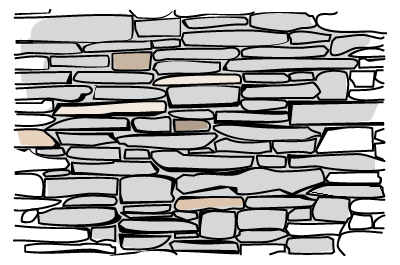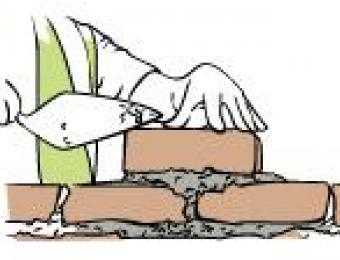
What is stone cladding?
If you like the look of solid stone walls, but don’t want to veer away from the timber frame construction model or commit to the extra costs of building a house with solid stone walls, stone cladding could be exactly what you're after. This type of cladding (or 'siding', as it's also known) can be produced in a number of ways. It can be made from thinly sheared veneers of large stones or rocks which are then glued to plywood with mortar, and it can also be made from plywood coated in smallish pebbles.
Stone cladding is often used to conceal a less appealing finish (like concrete), but can also serve as an alternative to weatherboard or other options in external cladding, perhaps even as a decorative feature to complement another style of cladding.
Why install stone cladding?
Stone exteriors look great and the cladding is a available in a wide variety of styles. Stone can help you achieve almost any look, from cottage to castle. Although it can be more expensive than other cladding options, properly installed stone cladding is very durable and resists damage from fire and strong weather conditions. Cladding often helps to create a tight building envelope with a well-functioning vapour barrier, so moisture is kept out of your home but can escape it if necessary.
Cladding is also a good start to creating a well insulated home, but more insulation will be needed to help you regulate the temperature effectively.
How is stone cladding installed?
Stone cladding can be more difficult to install than other types of cladding, as it is heavier and puts more stress on foundations and walls. Once the house frame is put up and sheathed with plywood or a similar thin, flexible material, the cladding can be installed. It generally comes in sheets, which are attached to the the outside side of the wall studs and sheath, leaving a space between the cladding and the sheath to allow water and air to circulate.
Before installing the stone veneers, the wall surface is usually first treated with a waterproofing material. This prevents water from getting inside the house but also allows condensation from inside to escape, which helps prevent mould, mildew and rot.
Maintenance
Stone cladding needs almost no maintenance aside from a yearly wash. Stones with gaps or protrusions have a tendency to grow mould or mildew on the sides that are shadowed from the sun, so keep an eye on any growth. 'Efflorescence' also has a tendency to appear on stone and masonry walls. This white powdery coating of salt is a product of water evaporating out of the stone. It can easily be dealt with by scrubbing the stones gently with a non-wire brush dipped in a diluted white vinegar solution. If your siding has mortar in between the stones, check this annually and replace it as required.
|
Advantages
|
Disadvantages
|





